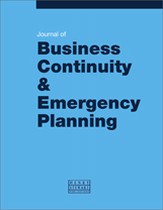Making cities resilient: Increasing resilience to disasters at the local level
Abstract
Half of humanity is now living in cities, according to the United Nations Population Division. The urban population exceeded the rural for the first time in 2008, and by 2050 urbanisation will rise to 70 per cent with increased urban risk. ‘Today, 100 cities are in control of 30 per cent of the world’s economy.’ The need for maintenance and upkeep of these cities makes safety measures for their citizens crucial. In this context, urban risk, city planning and the role of local governments in dealing with risk reduction have been recognised as key factors to build communities resilient to disasters. While many local governments have taken action to reduce vulnerability, especially when it comes to government organising capacity to deal with disasters, much remains to be done. Disaster risk has become an acute and increasingly urban issue. Poorly-planned urban environments, weak urban governance, an old and fragile infrastructure, and rapid population growth have increased pressure on the urban environment and triggered exposure to disaster risk. More and more people are settling in potential danger zones such as flood plains, volcanic flanks or earthquake faults and coastal areas. They do so because planners and local governments fail to provide alternatives, or because they cannot afford safer land. Local government officials are confronted with the threat of disasters daily, and need improved access to policies and tools to cope with them effectively.
The full article is available to subscribers to the journal.
Citation
Albrito, Paola (2012, March 1). Making cities resilient: Increasing resilience to disasters at the local level. In the Journal of Business Continuity & Emergency Planning, Volume 5, Issue 4. https://doi.org/10.69554/ANPT2076.Publications LLP
